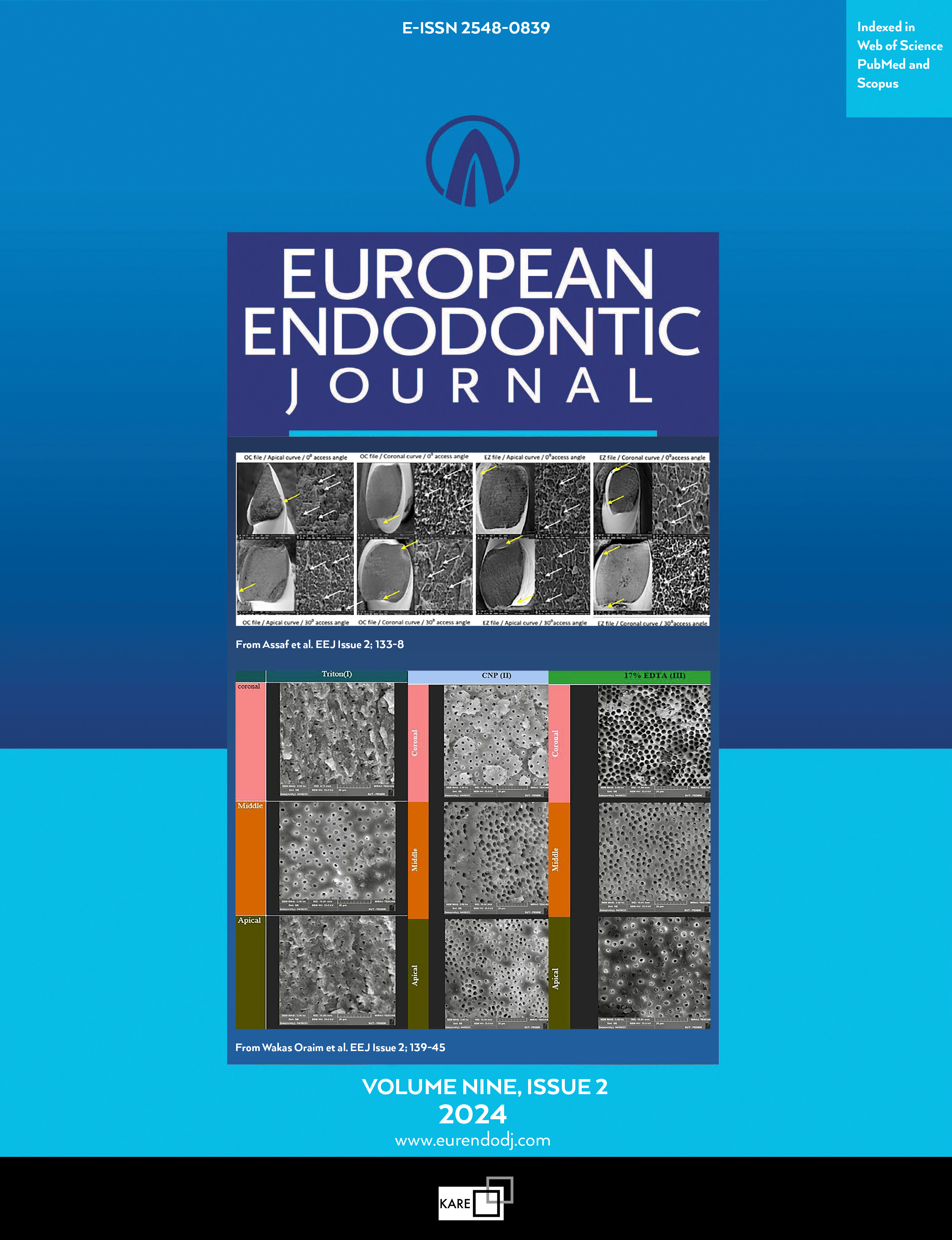Metrics
2023 IMPACT FACTOR
5 year Impact Factor
Eigenfactor
2023 CiteScore
Journal Citation Reports (Clarivate, 2024)(Dentistry, Oral Surgery & Medicine (Science))
In-Depth Metallurgical and Microstructural Analysis of Oneshape and Heat Treated Onecurve Instruments
Arash Azizi1, Carlo Prati1, Riccardo Schiavon1, Raquel Michelle Fitzgibbon1, Chiara Pirani1, Francesco Iacono1, Gian Andrea Pelliccioni1, Andrea Spinelli1, Fausto Zamparini1, Pietro Puddu2, Giovanni Bolelli2, Luigi Generali31Department of Biomedical and Neuromotor Sciences DIBINEM, Endodontic Clinical Section, Faculty of Dentistry, University of Bologna, Bologna, Italy2Department of Engineering Enzo Ferrari (DIEF), University of Modena and Reggio Emilia, Modena, Italy
3Department of Surgery, Medicine, Dentistry and Morphological Sciences with Transplant Surgery, Oncology and Regenerative Medicine Relevance (CHIMOMO), University of Modena and Reggio Emilia, Modena, Italy
Objective: To define surface, mechanical, microstructural and metallurgical features of conventional OneShape (OShape) and heat-treated OneCurve (OCurve) nickel-titanium instruments.
Methods: Instruments were analysed by scanning electron microscopy (SEM) on new instruments and after simulated clinical use (SCU). Cyclic fatigue testing was performed and the number of cycles to fracture (NCF) and the length of the fractured instruments were measured (Mann-Whitney test). Fractured instruments during cyclic fatigue testing were then inspected by SEM fractographic analysis. Field emission gun scanning scanning electron microscopy (FEG-SEM), energy-dispersive X-ray spectroscopy (EDX) and micro-Raman spectroscopy were used to assess alloy surface chemistry. Focused ion beam (FIB) was performed to analyse the oxide layer on the surface of OCurve before and after SCU. X-Ray diffraction (XRD), metallographic evaluation and differential scanning calorimetry (DSC) were used to determine martensitic/austenitic phase transformation temperatures.
Results: SEM observations on new instruments revealed a smooth regular surface with flattened milling grooves. No wear features were detected after SCU. OCurve exhibited a higher cyclic fatigue resistance (P<0.05), slower crack propagation and a surface layer of TiO2. Metallographic analysis and XRD showed the prevalence of martensitic grains on OCurve instruments that were stable at body temperature as confirmed by DSC analysis. Furthermore, DSC demonstrated a shift in the temperature transformation ranges suggesting an increase of martensite phase in autoclaved OCurve instruments.
Conclusion: Heat treatment processes were confirmed as a valid enhancement of the properties of the new generation NiTi instruments. OCurve presented a significant improvement over OShape regarding both mechanical and metallurgical characteristics. (EEJ-2020-09-220)
Corresponding Author: Arash Azizi
Manuscript Language: English
(530 downloaded)


